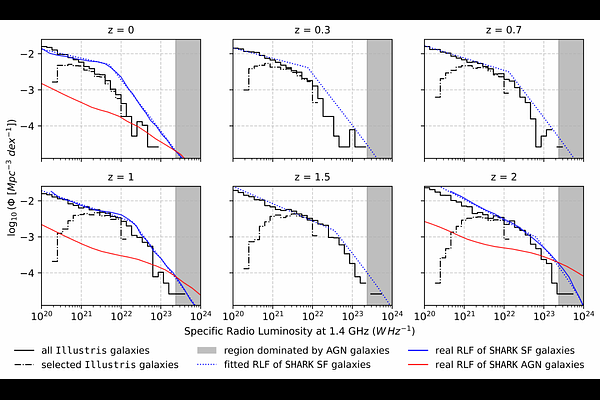Polarization-shape alignment of IllustrisTNG star-forming galaxies

Polarization-shape alignment of IllustrisTNG star-forming galaxies
Rui Zhou, Liang Dai, Junwu Huang, Weichen Winston Yin, Simone Ferraro
AbstractIn star-forming disk galaxies, the radio continuum emission (1-10 GHz) powered by star formation has an integral polarization direction imperfectly aligned with the apparent disk minor axis. This polarization-shape alignment effect was previously observed in a small sample of local spirals. If this is prevalent for disk galaxies out to cosmological redshifts, novel measurements of cosmic birefringence and cosmic shear will be enabled by leveraging radio continuum surveys such as the Square Kilometre Array synergized with galaxy shape measurements. We calculate the polarization-shape misalignment angle for star-forming galaxies in the IllustrisTNG50 simulation at 0 < z < 2, assuming that additional polarized radio emission from an active galactic nucleus is negligible in at least a sizable fraction of the star-forming galaxies. The alignment found for z = 0 is consistent with local spiral data, but significantly deteriorates as redshift increases. Moreover, it degrades toward lower frequencies due to internal Faraday depolarization. Thanks to cosmic redshifting, observing higher-z galaxies at a fixed frequency greatly mitigates degradation due to reduced Faraday depolarization at the source-frame frequency. We present analytic fits to the non-Gaussian misalignment angle distribution, and evaluate Fisher information per galaxy for measuring a polarization rotation angle induced by cosmic birefringence. For observation at 4.8 GHz, the effective root-mean-square misalignment angle is 18{\deg}, 23{\deg}, and 33{\deg} at z = 0, 1 and 2, respectively. As accurate observation-driven models are not yet available for cosmological galaxy samples, our results motivate pilot observations to empirically characterize polarization-shape alignment, and can facilitate forecasts of cosmology and fundamental physics applications that exploit this effect.